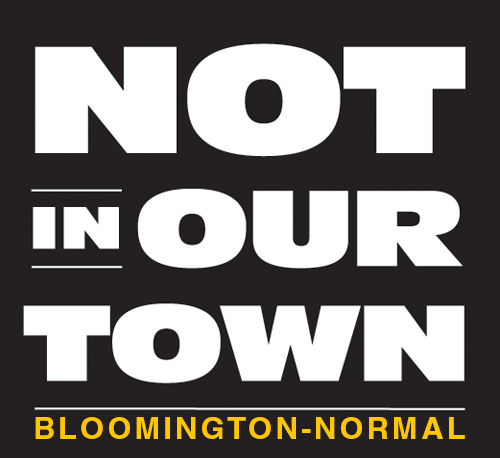Kelley Becker
NIOTBN Faith and Outreach Committee
On Wednesday, October 7, 2015, I had the privilege of talking with a group of Eureka College freshmen about the challenges that people who are chronically homeless face and some possible solutions. I was invited to speak by their instructor, Holly Rocke, who is a member of the church I serve, First Christian Church in Bloomington.
I shared with the students that I have built relationships with people in our community who live outside in tents year round. They endure harsh winter weather, heavy rains in the spring and excessive heat and mosquitoes in the summer. My work with people who are chronically homeless began because I learned where they were living and I and some friends began to share meals with them.
Over the years, we have continued to share meals and our lives. There are a group of people from the Bloomington-Normal community and beyond who take turn sharing meals and helping these friends in other ways. You see, there is not just one reason people become chronically homeless, so there isn’t just one way to help people who chronically homeless. Because I have gotten to know some of their stories personally, I have been able to work in the community for permanent solutions that I believe can work.
I have learned that our emergency shelters, Home Sweet Home and Safe Harbor, will never be able to help some people who are chronically homeless. There are some people that, due to their past, are unwelcome in our shelters. There are some people who, because of addiction, mental health or personality are unable to follow the rules the shelters must impose. It is these people that I have been working to help.
The Tiny Home Project was started in an effort to provide shelter, dignity, safety and a new start for people who are unable or unwilling to go to an emergency shelter. It is partnership between First Christian Church in Bloomington, The Matthew Project from Heyworth, the Lutheran Board of Church Extension and Illinois Wesleyan University School of Theatre Arts. We hope that through tiny homes we are able to provide housing FIRST so that people who are chronically homeless can change their lives forever.
Our first tiny home is almost finished. Our goals with this build were to 1) draw attention to chronic homelessness 2) give people who are chronically homeless an opportunity to see a tiny home and 3) to encourage community leadership to look at this solution.
At the Eureka College presentation, I showed the students pictures of the tiny house build and gave them the opportunity to ask questions. Many of the questions centered on how we would decide who is allowed to live in the homes or whom we would choose first. We hope to be able to build enough homes to put an end to living outside in our community. Of course, we would fill the homes in the beginning based on critical need. In other words, there are people whose health is seriously at risk by continuing to live outside. We should house them first.
It was hard for some of the students to wrap their minds around the idea of providing housing without strings attached. We teach our young people to grow up, get an education and make their way in the world. I talked with them about how difficult that is for some people and that many people in our country are teetering on the edge of homelessness all the time. We have to help each other. There is enough for everyone. Everyone should have a place to belong and a place to call home.
I believe we need to be a community that does not judge whether we believe a person deserves help, but instead commits to helping everyone have a safe place to live. Tiny homes may not be the solution for everyone, but it is a solution for some. We are in the process of working with City of Bloomington leadership, business leaders and social service organizations to find a place to put the tiny homes.
This project is an amazing example of how the faith community, business community, academic community and social service community can come together for solutions. We do not all agree and working together is sometimes difficult. However, together we are better. By working together we have the opportunity to build something that benefits the entire community.

